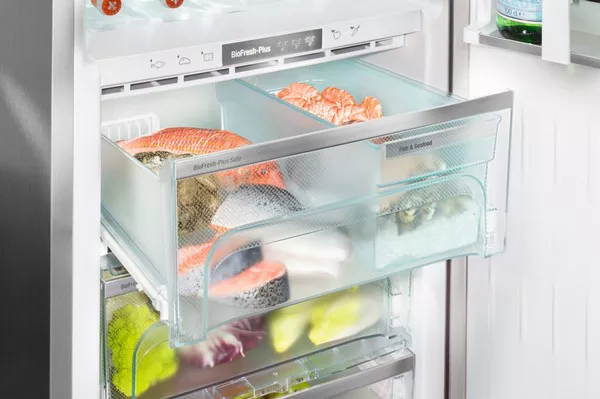Salmon is a popular and nutritious seafood choice enjoyed by people around the world. Whether you’re an avid angler or a seafood enthusiast, the question of how long salmon can stay in the freezer is crucial for maintaining its quality and safety. In this article, we will delve into the science of freezing salmon, exploring factors such as storage conditions, freezer types, and the impact on taste and texture. Understanding these elements will help you make informed decisions about freezing salmon and ensure a delightful culinary experience even after an extended stay in the freezer.
The Basics of Freezing Salmon:
Freezing is a time-tested method of preserving food by slowing down the growth of bacteria, yeasts, and molds that cause spoilage. When it comes to salmon, the process involves reducing the temperature of the fish to below freezing, typically around -4°F (-20°C) or lower. At these temperatures, the water molecules in the salmon’s cells turn into ice crystals, effectively putting a pause on biological processes and preventing the growth of microorganisms.
See Also: 7 Healthiest Salmon to Savor: A 2023 Guide
Factors Influencing Freezer Storage:
Temperature Consistency:
The first and foremost consideration for freezing salmon is maintaining a consistent and low temperature. Most household freezers operate at around -4°F (-20°C) or colder, which is sufficient for preserving salmon for an extended period. However, fluctuations in temperature can impact the quality of the fish, leading to freezer burn and loss of texture.
Packaging Matters:
Proper packaging is crucial for protecting salmon from freezer burn and maintaining its flavor. Airtight containers, vacuum-sealed bags, or freezer-grade plastic wrap can help prevent exposure to air and reduce the risk of dehydration. Additionally, packaging should be moisture-resistant to safeguard against freezer odors affecting the salmon.
Freshness Matters:
The quality of the salmon at the time of freezing significantly influences its shelf life in the freezer. Freezing should ideally occur when the fish is at its freshest, capturing the peak of flavor and texture. Fish that has been frozen promptly after catch is likely to retain more of its original qualities than salmon that has been stored for an extended period before freezing.
See Also: Can You Eat Salmon Every Day: Benefits & Considerations
Salmon Shelf Life in the Freezer:
The duration salmon can stay in the freezer depends on several factors, including the storage conditions, the initial quality of the fish, and your expectations for taste and texture. As a general guideline:
Short-Term Freezing (1-2 Months):
For optimal freshness and flavor, it is recommended to consume frozen salmon within the first one to two months. During this period, the fish is less susceptible to freezer burn, and the risk of texture degradation is minimal.
Medium-Term Freezing (2-6 Months):
Salmon can be stored in the freezer for up to six months without significant loss of quality. However, it’s crucial to monitor the storage conditions, ensuring the freezer maintains a consistently low temperature.
Long-Term Freezing (Beyond 6 Months):
While salmon can technically stay in the freezer for longer durations, the quality may start to decline. Over time, the risk of freezer burn increases, impacting the taste and texture of the fish. However, proper packaging and storage conditions can help mitigate these effects.
Quality Considerations:
Texture Changes:
Over time, frozen salmon may experience changes in texture due to the formation of ice crystals. While this is a natural consequence of freezing, it can be minimized by using high-quality packaging and maintaining optimal storage conditions.
Flavor Retention:
The flavor of frozen salmon is generally well-preserved, especially if the fish is frozen at its freshest. However, extended storage periods may lead to a subtle decline in flavor intensity.
Freezer Burn:
Freezer burn occurs when air comes into contact with the surface of the salmon, leading to dehydration and the development of off-flavors. Proper packaging and airtight seals are essential for preventing freezer burn and preserving the salmon’s quality.
Tips for Freezing Salmon:
Preparation:
Clean and fillet the salmon thoroughly before freezing. Removing bones, scales, and any excess moisture will contribute to better preservation.
Quality Packaging:
Invest in high-quality freezer bags, vacuum-sealed pouches, or airtight containers. Ensure that the packaging is labeled with the date of freezing for easy tracking.
Temperature Monitoring:
Regularly check and monitor the temperature of your freezer to ensure it stays consistently below -4°F (-20°C). Consider using a freezer thermometer for accurate readings.
Storage Organization:
Organize the freezer to prevent overcrowding, allowing air circulation around the salmon packages. This helps maintain a more stable temperature and reduces the risk of uneven freezing.
See Also: 7 Ways to Cook Salmon
Conclusion:
Freezing salmon is an effective way to extend its shelf life while preserving its nutritional value and flavor. By understanding the factors that influence frozen salmon quality and following proper storage practices, you can enjoy this delicious seafood even after extended periods in the freezer. Whether you’re planning for short-term or long-term storage, a combination of optimal freezing techniques and quality packaging will ensure that your frozen salmon delights your taste buds when it finally reaches the dinner table.

